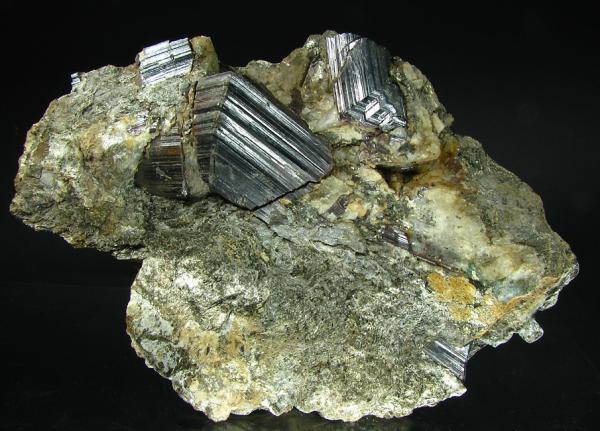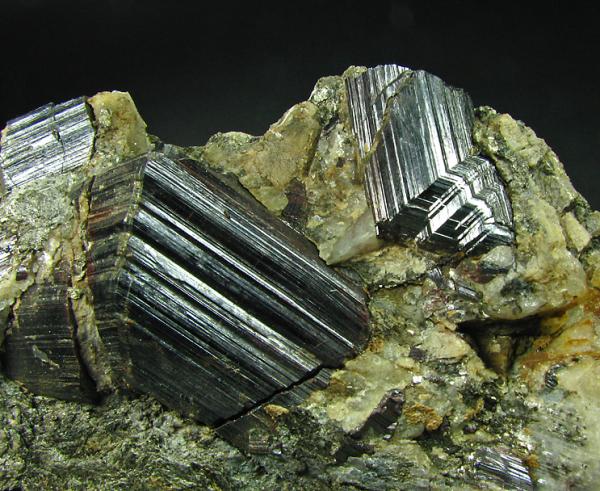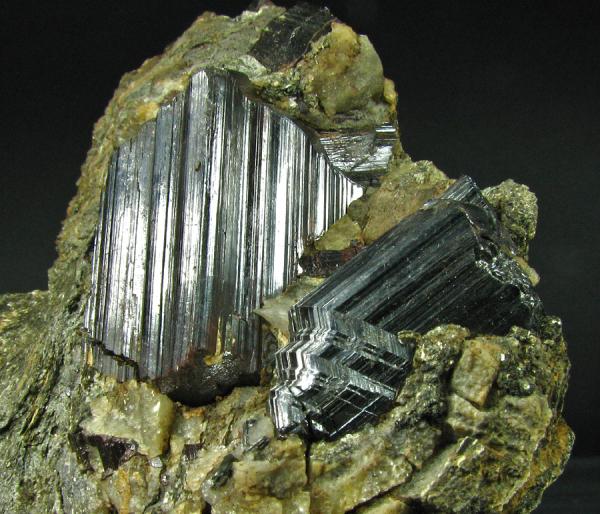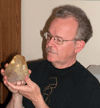Montanpark

Joined: 06 Nov 2008
Posts: 241
Location: Mainz



|
 Posted: Feb 04, 2009 16:31 Post subject: Rutile locality in Namibia Posted: Feb 04, 2009 16:31 Post subject: Rutile locality in Namibia |
|
|
Hi all,
i got this specimen (3 pictures attached) in 2005 in Swakopmund - Namibia and was told it was likely to come from Damaraland, no further details. Anyone who knows this kind of rutile specimens and can help me out with the right location? Size of the sample is approx. 11.5 x 18.5 x 5.5 cm, largest rutile ~ 5 cm. Interesting "knittering" of one crystal, all stressed by tectonics. Host rock is gneissic with mica and quartz.
Thanks
cheers
Roger
| Description: |
|
| Viewed: |
20655 Time(s) |

|
| Description: |
|
| Viewed: |
22083 Time(s) |

|
| Description: |
|
| Viewed: |
20591 Time(s) |

|
|
|
Pete Richards
Site Admin

Joined: 29 Dec 2008
Posts: 846
Location: Northeast Ohio



|
 Posted: Feb 04, 2009 19:52 Post subject: Re: Rutile locality in Namibia Posted: Feb 04, 2009 19:52 Post subject: Re: Rutile locality in Namibia |
|
|
Hello Roger,
Nice rutile specimen! Sorry, I can't tell you where it is from.
I see you are from Germany, and I don't know how to translate "knittering", but I presume it has to do with the zig-zag morphology of the crystal on the right. Now, "zig-zag" may be equally obscure to others, but it means bent one way and then the other, back and forth.
You attribute this twinning to tectonic stresses, but I would suggest this is not the case. Rutile can respond to stress by twinning, but this usually leads to parting, which leads the specimen to fall apart along the twin planes, which this crystal is not doing. If the shape of this crystal were due to tectonic distortion, it is hard to see why this distortion would not have affected the crystal immediately to the left in a similar fashion. Also, the crack visible in the specimen in several views goes through both specimens but does not align with twinning in either one. The crack may not be due to tectonic distortion, of course, but it does represent a stress that resulted in a change - a crack, not a twin plane.
Rutile is notorious for twinning seemingly as it wishes. I cannot offer a good explanation for this particular configuration, but it seems quite within the range of rutile morphology from localities lacking tectonic influence.
If you know of some literature that addresses rutile twinning by tectonic distortion, I would be most interested to receive citations from you!
In closing, your photography is wonderful! My friend Erich Offermann, outstanding photographer from Arlesheim, Switzerland, told me several times "You cannot take a good picture of a bad specimen". Your images speak to your ability as a photographer and to the quality of your collection!
_________________
Collecting and studying crystals with interesting habits, twinning, and epitaxy |
|
Montanpark

Joined: 06 Nov 2008
Posts: 241
Location: Mainz



|
 Posted: Feb 05, 2009 08:00 Post subject: Re: Rutile locality in Namibia Posted: Feb 05, 2009 08:00 Post subject: Re: Rutile locality in Namibia |
|
|
Dear Pete,
thanks a lot for your kind comments .. especially on the photos ;-) .. i try to improve my skills subsequently. Talking about skills ... the term "knittering" was more the desperate try to find a term describing the poly-twinning .zig-zag.. was late yesterday evening and the good german beer may also have lead to a partial loss of skills in a foreign language.
Maybe writing "all tectonically stressed" was misleading .. i did not mention in first place the twinning in that context but the fact that all rutile crystals more or less underwent a brittle deformation process resulting in the observed (and partially healed by quartz etc) cracks. In the metamorphic environment the specimen obviuosly comes from it is very likely that there was more than one deformation event. So the obviously late stage cracks are not necessarily coincidental to the twinning - and i fully agree to you on that point.
It is some years ago that i dealt with crystallography but if i remember right twinning occurs either during crystal growth or due to mechanical strain after formation (and combinations of those). Polysynthetic twins are more likely induced by mechanical reasons e.g. tectonism and i tend to look upon the zig-zag as polysynthetic twinning. The large crystal is a knee-twin also with (101) twin plane but the crystal has a different orientation in the sample. So could it be possible, that the zig zag twinning occured during an earlier deformation stage maybe at higher temperature (when lattice translation is eased) and that the strain was directed the way that only crystals in a distinct orientation were affected that way? I haven´t found any detailed reference on this until now but will have a look if i find something. I´d be glad if you would share your thoughts about that topic with me.
Again, thanks for the suggestions,
cheers from germany
Roger
|
|




